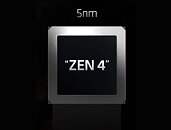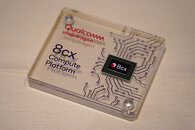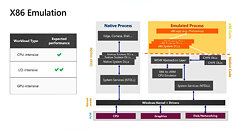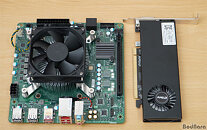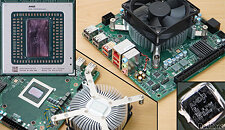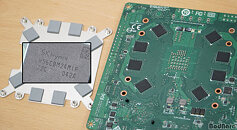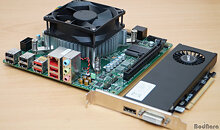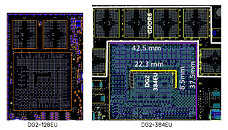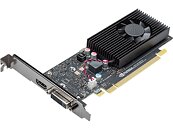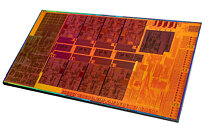
Intel Makes Jilted Reference to Apple in its Internal "Arrow Lake" Slide
Intel is designing a "Halo" SKU of a future generation of mobile processors with a goal to match Apple's in-house silicon of the time. Slated for tape-out some time in 2023, with mass-production expected in 2024, the 15th Generation Core "Arrow Lake-P Halo" processor is being designed specifically to compete with Apple's "premium 14-inch laptop" (presumably the MacBook Pro) that the company could have around 2024, based on an in-house Apple silicon. This is to essentially tell its notebook partners that they will have an SoC capable of making their devices in the class truly competitive. Apple relies on a highly scaled out Arm-based SoC based on in-house IP blocks, with a software that's closely optimized for it. Intel's effort appears to chase down its performance and efficiency.
The Core "Arrow Lake" microarchitecture succeeds the 14th Gen "Meteor Lake." It is a multi-chip module (MCM) of three distinct dies built on different fabrication nodes, in line with the company's IDM 2.0 strategy. These nodes are Intel 4 (comparable to TSMC N7 or N6), Intel 20A (comparable to TSMC N5), and an "external" 3 nm-class node that's just the TSMC N3. The compute tile, or the die which houses the CPU cores, combines a hybrid CPU setup of 6 P-cores, and 8 E-cores. The performance cores are likely successors of the "Redwood Cove" P-cores powering the "Meteor Lake" compute tiles. Intel appears to be using one kind of E-cores across two generations (eg: Gracemont across Alder Lake and Raptor Lake). If this is any indication, Arrow Lake could continue to use "Crestmont" E-cores. Things get interesting with the Graphics tile.
The Core "Arrow Lake" microarchitecture succeeds the 14th Gen "Meteor Lake." It is a multi-chip module (MCM) of three distinct dies built on different fabrication nodes, in line with the company's IDM 2.0 strategy. These nodes are Intel 4 (comparable to TSMC N7 or N6), Intel 20A (comparable to TSMC N5), and an "external" 3 nm-class node that's just the TSMC N3. The compute tile, or the die which houses the CPU cores, combines a hybrid CPU setup of 6 P-cores, and 8 E-cores. The performance cores are likely successors of the "Redwood Cove" P-cores powering the "Meteor Lake" compute tiles. Intel appears to be using one kind of E-cores across two generations (eg: Gracemont across Alder Lake and Raptor Lake). If this is any indication, Arrow Lake could continue to use "Crestmont" E-cores. Things get interesting with the Graphics tile.








